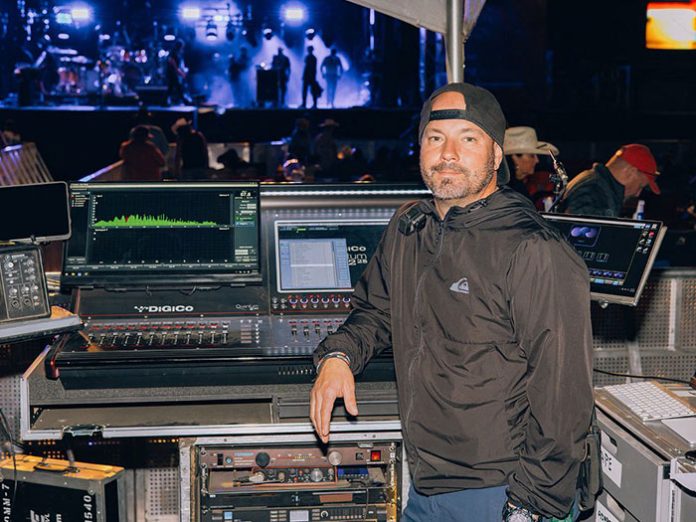Munsick’s sound team was bolstered by the addition of a dedicated monitor engineer after they transitioned to a pair of DiGiCo Quantum225 consoles, supplied by Clair Global.
Seth Hewson was Munsick’s initial FOH Engineer when the artist’s burgeoning career was still using what Hewson describes as a “Clair ‘band-in-a-box’” with a 32-input mixer and Shure PSM 1000 in-ears packaged together. “Ian and the band mixed their own ears using the app on their iPhones, with no monitor engineer,” he recalled. “I worked with Clair Global on the Quantum225 spec and we introduced the consoles at rehearsals back in March of this year. I was there when Ian first transitioned to the DiGiCos, which was also the first time he hired a monitor engineer.”
That monitor engineer was Graig Clinton, who since July has moved to mixing FOH, with Greg Roberts coming aboard as the newest monitor engineer. There was now a complete mix team, both on Quantum225 desks, just as Munsick’s career was ready to shift higher.
“The difference in moving to DiGiCo was as stark as you’d imagine,” commented Hewson. “We loaded an SD-Rack with 32-bit input and output cards, which only emphasised the effect: the noise floor was ultra-low on the output cards and the dynamic range of the inputs felt sky high compared to the previous pre-amps. I specified the Quantum225 desks because I didn’t want to lean on outboard or external plug-in servers. The Mustard processing and Spice Rack had so much functionality, as well as character, and they’ve helped take the show to a whole new level. We also went from 32 inputs on the previous rig to 56 pre-amps on the SD-Rack and 72 inputs on the consoles. We were able to split out track stems, add some triggers for drum noise gates, add some more utility instruments for Ian, and introduce some guest/MC channels in the RF count. It helped make us much more robust, especially on the two arena headline shows that Ian played earlier this year.”
Hewson added: “The SD-Rack pre-amps are already pretty transparent, but Mustard gave the monitor engineer the option to add flavour or use Nodal Processing as needed, the band is super-tight and musical, but it was a process getting them to build trust in that new member of the team. DiGiCo gave us the tools to make that change and give the band confidence in their ear mixes being properly handled.”
“I’ve been a DiGiCo guy for ten years, but Quantum processing really does take it up to another level,” Clinton commented. “I was a Waves user for years and loved it, but with the Quantum, I’m using Mustard and Spice Rack pretty much exclusively now, and it’s been an amazing transition.”
Clinton explained that the Quantum225’s much smaller footprint came with a huge increase in power. “As well as the flexibility to go from clubs to arenas and larger venues, which is a big help at this stage of Ian’s career,” he noted. “Processing like the optical compressor and the multiband EQ and compression have been fantastic. Also, I started on monitors and loved the 32-bit output cards I used there on the PSM-1000s, and have seen the transition to the 32-bit input cards at FOH. It’s just a seamless all-DiGiCo environment now, including for Greg on monitors, and it’s been phenomenal. It’s a great place to be.”






